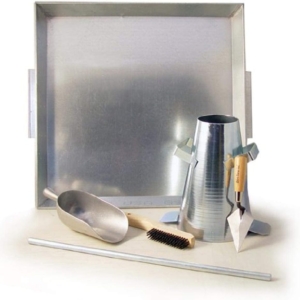Maximum Allowable Slump for Concrete Placed in Removable Forms
Introduction
Slump is a critical property of fresh concrete that measures its workability and consistency. It is defined as the vertical settlement of freshly mixed concrete when subjected to a slump test, as per ASTM C143/C143M. The slump value affects placement, compaction, and finishing, making it essential to control for different construction applications, including concrete placed in removable forms.
Understanding Slump and Its Importance
Slump is measured in inches (or millimeters) and is directly related to the concrete’s water content, admixtures, and aggregate gradation. A higher slump indicates a more fluid mix, while a lower slump signifies a stiffer mix. The correct slump ensures that concrete is workable enough to be properly placed and compacted without excessive segregation or bleeding.
For concrete placed in removable forms, controlling slump is particularly important to maintain structural integrity, prevent excessive form pressure, and achieve proper consolidation.
Maximum Allowable Slump for Removable Formwork
The allowable slump for concrete placed in removable forms is typically governed by industry standards such as the American Concrete Institute (ACI) 211.1, ACI 301, and ACI 318. According to these standards, the recommended slump range depends on the method of placement and the specific structural application.
Generally, the maximum allowable slump for concrete in removable forms is:
-
3 to 5 inches (75 to 125 mm) for most reinforced concrete elements
-
1 to 3 inches (25 to 75 mm) for slip-form construction or concrete placed with vibration
-
Up to 6 inches (150 mm) if water-reducing or plasticizing admixtures are used, as permitted by the mix design
Factors Affecting Slump Requirements
Several factors influence the slump required for concrete placed in removable forms:
-
Formwork Strength and Stability
-
Excessively high slump can lead to increased lateral pressure on the formwork, potentially causing bulging or failure.
-
Lower slump is preferred when forms are lightweight or not well-braced.
-
-
Reinforcement Congestion
-
If reinforcement is dense, a higher slump (up to 5 inches) may be required to ensure proper flow and consolidation around the bars.
-
However, vibration techniques can allow for lower slump placement while still achieving proper consolidation.
-
-
Method of Placement
-
Vibrated concrete: Lower slump (1 to 3 inches) is ideal to prevent segregation.
-
Manually placed concrete: A medium slump (3 to 5 inches) is preferred for easier handling.
-
Pumped concrete: Slump may need to be slightly higher (4 to 6 inches) to facilitate pumping.
-
-
Admixtures and Water-Reducing Agents
-
High-range water reducers (superplasticizers) can allow for slumps up to 7 or 8 inches while maintaining proper cohesion.
-
If such admixtures are used, slump requirements should be specified per mix design and field conditions.
-
-
Environmental Conditions
-
Hot weather can accelerate setting, requiring adjustments to maintain workability.
-
Cold weather may necessitate a lower slump to prevent excessive bleeding and freezing risks.
-
Consequences of Excessive Slump
Placing concrete with a slump higher than the allowable limit can lead to several problems:
-
Segregation: Excessive water in the mix causes coarse aggregates to separate from cement paste.
-
Bleeding: Excess water rises to the surface, weakening the bond and increasing finishing difficulties.
-
Delayed Setting Time: Higher water content extends setting time, which may be problematic in fast-paced construction schedules.
-
Structural Weakness: Overly wet concrete can result in reduced compressive strength and durability.
Conclusion
For concrete placed in removable forms, maintaining the correct slump is essential for achieving proper placement, consolidation, and structural integrity. While the typical range is 3 to 5 inches, project-specific conditions, reinforcement density, placement methods, and admixtures must be considered. Adhering to ACI guidelines and conducting slump tests on-site will help ensure quality control and optimal performance in construction.
Would you like any modifications or additional details?





 Our Construction company is Servicing Southeast Michigan, Detroit and the Tri-County area Wyane, Oakland and Macomb;
Our Construction company is Servicing Southeast Michigan, Detroit and the Tri-County area Wyane, Oakland and Macomb;

